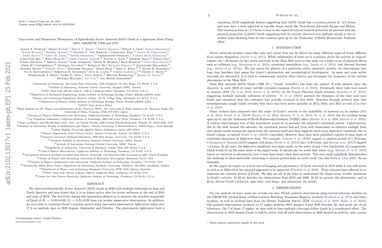Time-series and Phasecurve Photometry of Episodically-Active Asteroid (6478) Gault in a Quiescent State Using APO, GROWTH, P200 and ZTF
We observed Episodically Active Asteroid (6478) Gault in 2020 with multiple telescopes in Asia and North America and have found that it is no longer active after its recent outbursts at the end of 2018 and start of 2019. The inactivity during this apparation allowed us to measure the absolute magnitude of Gault of H_r = 14.63 +/- 0.02, G_r = 0.21 +/- 0.02 from our secular phasecurve observations. In addition, we were able to constrain Gault's rotation period using time-series photometric lightcurves taken over 17 hours on multiple days in 2020 August, September and October. The photometric lightcurves have a repeating $\lesssim$0.05 magnitude feature suggesting that (6478) Gault has a rotation period of ~2.5 hours and may have a semi-spherical or top-like shape, much like Near-Earth Asteroids Ryugu and Bennu. The rotation period of ~2.5 hours is near to the expected critical rotation period for an asteroid with the physical properties of (6478) Gault suggesting that its activity observed over multiple epochs is due to surface mass shedding from its fast rotation spun up by the Yarkovsky-O'Keefe-Radzievskii-Paddack effect.
PDF Abstract